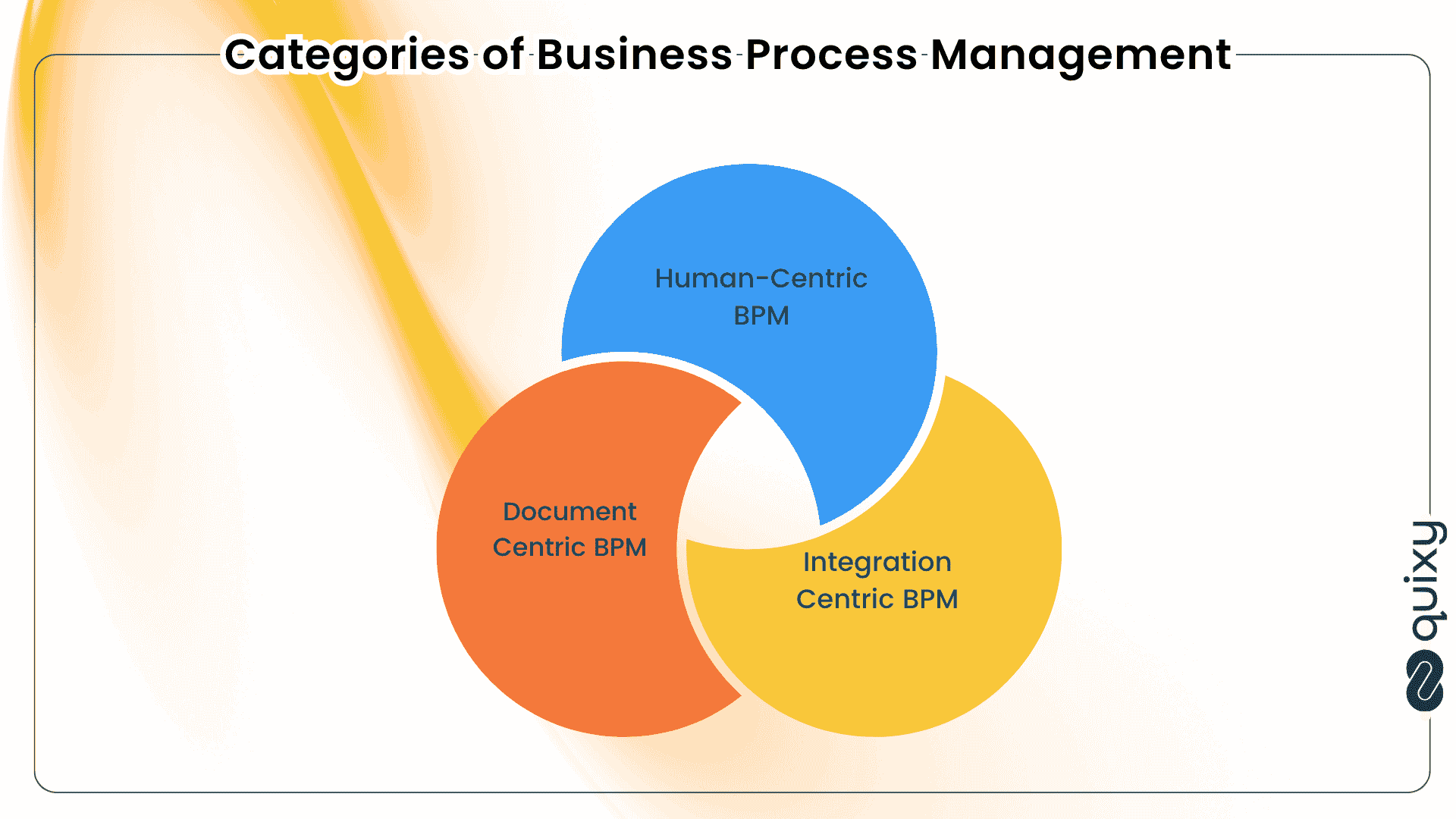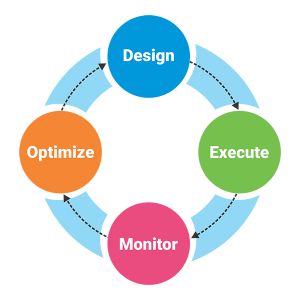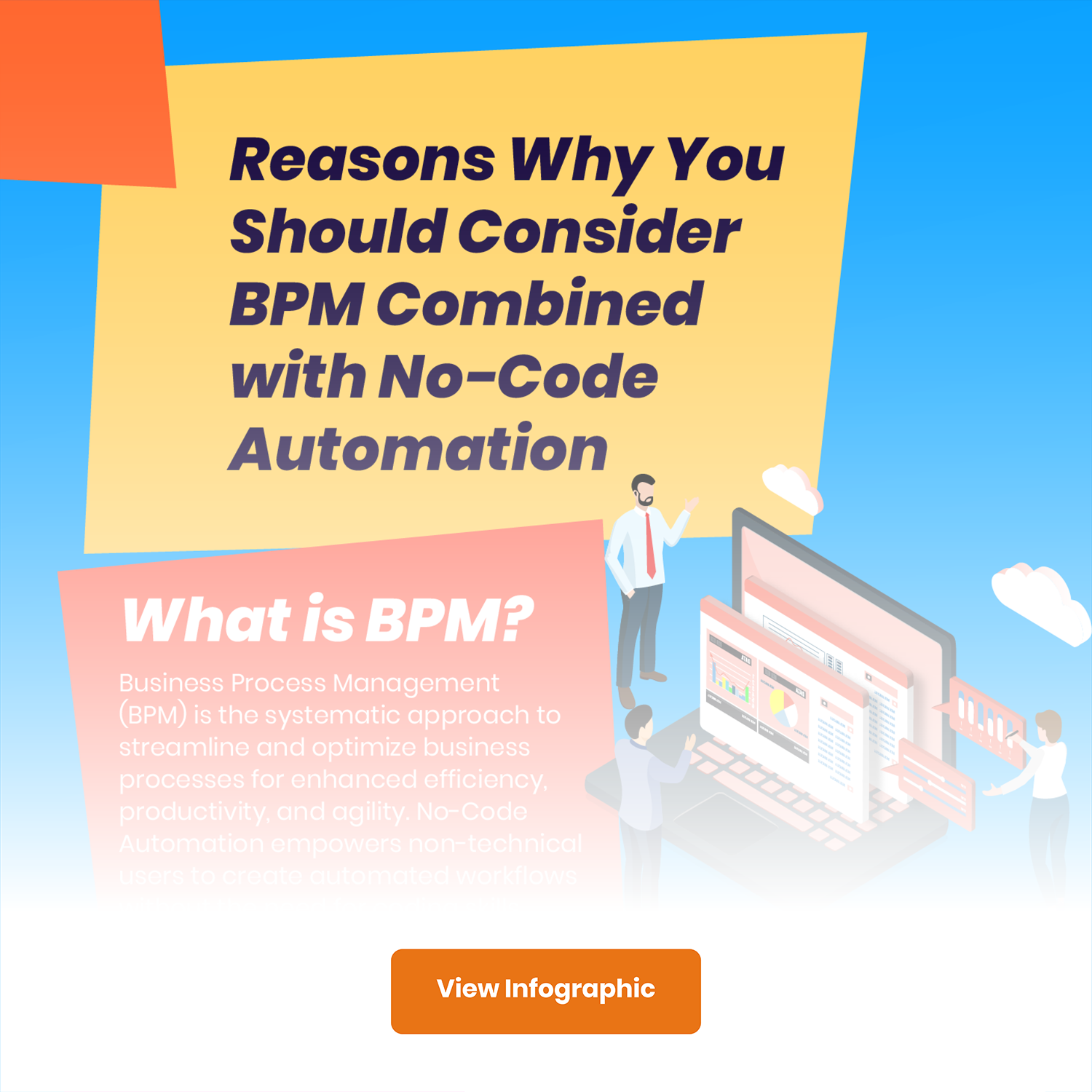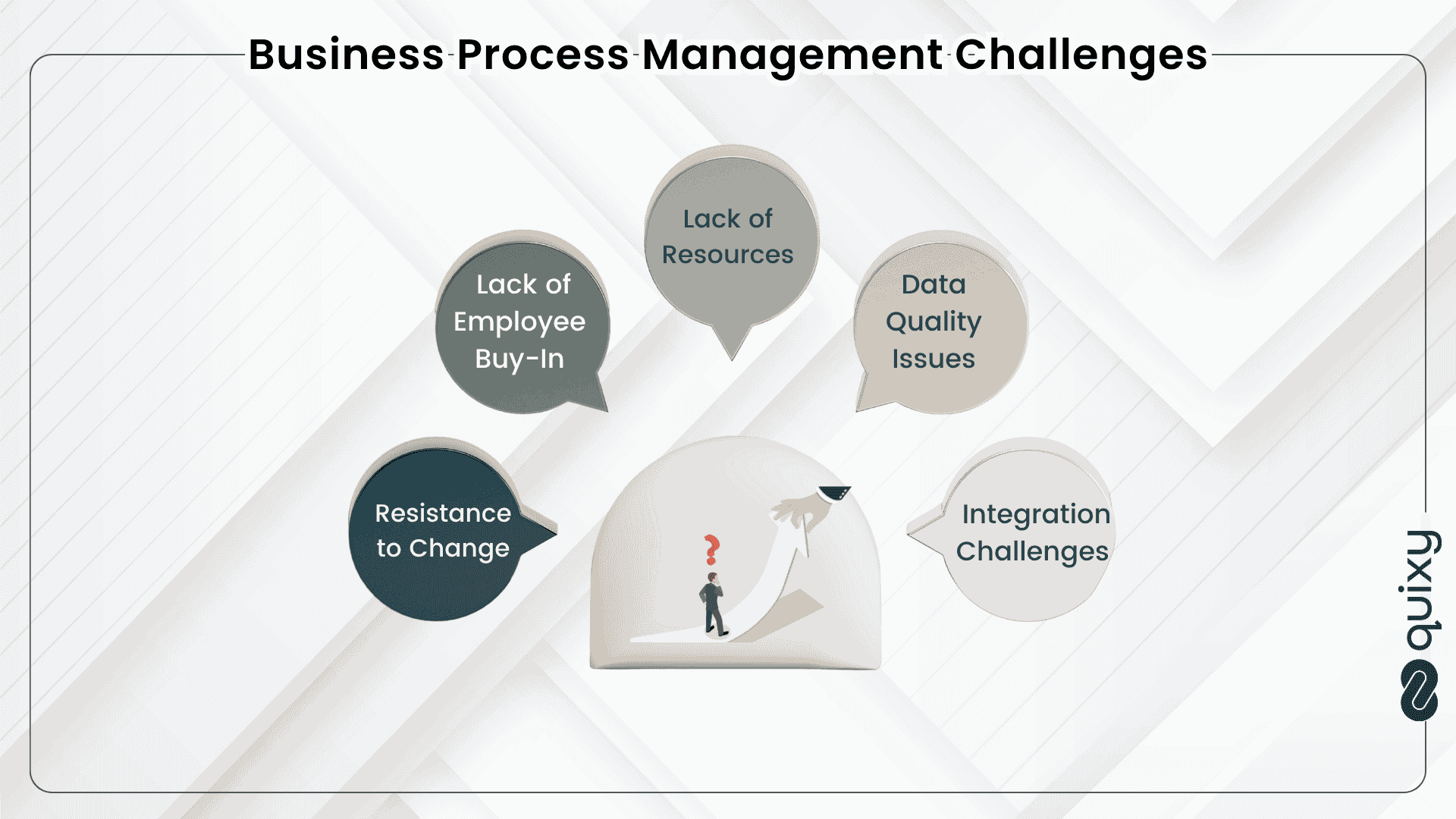
Every successful business relies on processes—structured sets of activities that guide teams toward achieving specific goals. But in a rapidly evolving market, simply having processes isn’t enough. Business Process Management (BPM) is the practice of examining, refining, and optimizing these workflows to drive efficiency, reduce errors, and enhance outcomes for both the business and its customers.
BPM isn’t a one-time fix—it’s a continuous approach that helps organizations adapt, innovate, and stay competitive. By analyzing existing workflows, identifying inefficiencies, and implementing improvements, companies can cut costs, improve productivity, and create a smoother, more predictable operational flow. Whether it’s streamlining repetitive tasks or supporting larger digital transformation initiatives, BPM equips businesses to operate smarter and deliver greater value consistently.
The global Business Process Management market is expected to grow to $26.18 billion in 2028
What is Business Process Management?
Business Process Management (BPM) refers to the discipline of designing, modeling, executing, monitoring, and optimizing business processes. It brings structure and efficiency to organizational workflows by aligning people, technology, and data across different departments.
According to Gartner, organizations that adopt BPM frameworks increase project success rates by up to 70%.
BPM isn’t limited to large enterprises. Small and mid-sized businesses also benefit from streamlined operations and quicker decision-making.
Also Read: Your Guide to Warehouse Management Success
BPM acts as the backbone of operational excellence. By refining workflows and removing inefficiencies, BPM helps:
- Increase productivity
- Enhance decision-making
- Foster collaboration across teams
- Ensure compliance and risk management
- Enable faster adaptation to market changes
Think of BPM as the conductor of an orchestra, bringing harmony between systems, teams, and processes.
Also Read: Online License Management System for Businesses : From Paperwork to Progress
BPM and Automation: Driving Efficiency at Scale
Business Process Management (BPM) and automation go hand in hand. While BPM focuses on designing, analyzing, and optimizing business processes, automation ensures that these processes run seamlessly with minimal manual intervention. Combining the two allows organizations to reduce errors, save time, and free employees from repetitive tasks so they can focus on higher-value work.
Automation within BPM can take many forms—from simple rule-based task automation to advanced workflow orchestration using AI and machine learning. For example, invoice approvals, employee onboarding, customer service requests, and inventory updates can all be automated, ensuring consistency and speed.
The benefits of integrating automation with BPM are clear:
- Increased Efficiency: Repetitive tasks are completed faster without human errors.
- Consistency and Compliance: Automated workflows follow predefined rules, reducing the risk of mistakes or policy violations.
- Enhanced Visibility: Real-time tracking and monitoring allow managers to quickly spot bottlenecks and inefficiencies.
- Scalability: Businesses can handle larger volumes of work without adding extra resources.
By leveraging BPM with automation, companies not only streamline operations but also create a foundation for digital transformation. This combination empowers teams to deliver better products and services, improve customer satisfaction, and adapt quickly in a competitive market.
AI in BPM: Transforming the Modern Enterprise
Business Process Management is no longer just about efficiency—it’s increasingly powered by artificial intelligence (AI), which is transforming the way organizations operate. AI in BPM enables businesses to move from reactive management to predictive, data-driven decision-making.
Key AI roles in BPM include:
- Process Mining: AI analyzes historical data to uncover hidden bottlenecks and inefficiencies in workflows.
- Predictive Analytics: Anticipates potential delays, risks, or resource constraints, enabling proactive adjustments.
- Intelligent Automation: Combines AI with workflow automation to handle complex, decision-based tasks that previously required human judgment.
By embedding AI into BPM, organizations can optimize operations, improve accuracy, and reduce operational costs—while freeing employees to focus on higher-value work.
Types of Business Process Management

Every organization engages in BPM in some way or another, and business process management works in multiple structures. Primarily, every business needs three types of BPM in different ratios. The following is a list that would help you better understand BPM’s scope.
1. Document Centric BPM
This type of BPM revolves around the creation, routing, review, and approval of documents. It’s particularly valuable in workflows where document accuracy, compliance, and version control are non-negotiable. Think of legal contracts, audit reports, policy documents, and financial statements.
Teams in legal, finance, HR, and compliance often rely on document-centric BPM to:
- Standardize approval processes
- Maintain audit trails
- Ensure regulatory compliance
- Speed up document turnaround times
By digitizing and automating document flows, businesses reduce manual errors and maintain control over sensitive, high-stakes information.
2. Human-Centric BPM
As the name suggests, human-centric BPM centers on processes that require human judgment, decision-making, or intervention. These workflows can’t be entirely automated due to their reliance on inputs such as approvals, feedback, or exception handling.
Common in customer service, project management, and HR operations, this BPM category enables:
- Clear task assignment and ownership
- Automated reminders and escalations
- Seamless collaboration between departments
- A balanced mix of automation and human oversight
Human-centric BPM ensures that while routine steps are streamlined, people remain at the heart of critical decisions.
Also Read : What is Business Process Optimization? Proven Techniques & Insights
3. Integration Centric BPM
Integration-centric BPM is designed to connect disparate systems, databases, and applications—enabling smooth data exchange and end-to-end automation without human involvement.
Ideal for IT, supply chain, and operations teams, this approach:
- Bridges legacy systems with modern software
- Automates data syncs across tools (e.g., CRM, ERP, and BI platforms)
- Eliminates silos by creating unified, interoperable workflows
- Increases speed and consistency across high-volume operations
When scalability and system-to-system communication are essential, integration-centric BPM delivers the backbone for a digitally unified enterprise.
Also Read: A Guide to Utilizing Low-Code and Change Management: Maximizing Enterprise Agility
Here are some Key Components and Functions of a BPMS
A modern Business Process Management System (BPMS) is more than just a tool—it’s a digital backbone that empowers organizations to design, run, monitor, and continuously improve their business processes. Whether you’re looking to optimize operations, reduce manual work, or ensure compliance, a BPMS offers the structure and intelligence needed to manage it all.
Below are the core components and functions that make up an effective BPMS:
- Process Design and Modeling
Before any process can be improved, it must be understood. BPMS platforms allow teams to visually map out workflows using intuitive drag-and-drop interfaces or BPMN (Business Process Model and Notation) standards. This visual clarity helps align stakeholders, identify inefficiencies early, and create a single source of truth for how work should flow.
✔️ Why it matters: Clear design leads to better implementation, smoother automation, and less miscommunication across teams.
- Automation
A BPMS eliminates manual, repetitive tasks by automating rule-based actions—such as data entry, notifications, approvals, and escalations. With automation in place, teams spend less time on administrative work and more time on strategic tasks.
✔️ Why it matters: Reduces human error, speeds up execution, and boosts productivity without scaling headcount.
- Workflow Management
Efficient workflows require seamless coordination between people, systems, and tasks. BPMS tools manage these handoffs—ensuring the right person or system gets the right task at the right time. This is especially crucial in cross-functional environments.
✔️ Why it matters: Ensures accountability, minimizes delays, and keeps complex processes on track.
Also Read: Boost Your Business with the 7 Best Task Management Software
- Monitoring and Analytics
Once processes are up and running, visibility is key. A BPMS provides real-time dashboards, performance metrics, and audit trails to help teams monitor process health. Leaders can track KPIs, uncover inefficiencies, and make data-informed decisions quickly.
✔️ Why it matters: What gets measured can be improved. Real-time insights are essential for agility and operational excellence.
- Continuous Improvement
A hallmark of BPM success is its ability to adapt and improve over time. A good BPMS helps identify bottlenecks, flag SLA breaches, and highlight opportunities for refinement using historical data and feedback loops.
✔️ Why it matters: Continuous improvement keeps processes efficient, compliant, and aligned with changing business goals.
- Integration
No system works in isolation. A robust BPMS seamlessly integrates with CRMs, ERPs, databases, communication tools, and custom software to create a unified digital ecosystem. Through APIs and connectors, it ensures data flows securely and consistently across platforms.
✔️ Why it matters: Eliminates data silos, reduces duplication, and empowers end-to-end automation across the tech stack.
A BPMS is like a trusted ally in the world of business, empowering organizations to adapt, evolve, and thrive in an ever-changing landscape. It’s a tool that promotes agility, efficiency, and the pursuit of excellence, ultimately contributing to an organization’s growth and success.
Also Read: Quality Management System: Boosting Efficiency and Ensuring Quality
Business Process Management Life Cycle
At the heart of effective BPM lies a structured, repeatable life cycle that guides organizations from identifying inefficiencies to achieving continuous improvement. Understanding this life cycle is essential for building resilient, agile operations that adapt to changing business needs.
Let’s break down the four key phases of the Business Process Management Life Cycle:

- Design: This foundational stage focuses on mapping out existing processes, identifying bottlenecks or pain points, and reimagining more efficient workflows. Teams collaborate to visualize how a process should function—considering inputs, outputs, roles, decision points, and potential risks.
- Execution: Once a process is designed, it’s time to bring it to life. This phase involves deploying the process in a live environment—using a mix of manual inputs, automated actions, and integrated systems. In a modern BPM setup, low-code or no-code platforms can help accelerate deployment without deep technical intervention.
- Management: Execution is just the beginning. The next step is actively managing and monitoring the process to ensure it’s performing as intended. This includes tracking KPIs, workload distribution, process timing, and exception handling—often through dashboards and alerts provided by your BPMS.
- Optimization: Business environments evolve, and so should your processes. This phase is all about iterating and improving based on performance insights, user feedback, and new business goals. Using analytics, teams can pinpoint inefficiencies, update workflows, and implement improvements continuously.
The BPM life cycle isn’t a one-time effort—it’s a continuous loop. Organizations that adopt this structured approach can stay agile, reduce operational waste, and build a culture of continuous improvement. As AI and automation reshape how we work, mastering the BPM life cycle will be critical for long-term success.
Also read: BPM Software – 11 things to consider for choosing the right one
Benefits of Business Process Management
Implementing Business Process Management (BPM) goes far beyond simply organizing tasks—it transforms the way organizations operate. By designing, executing, and optimizing workflows strategically, BPM delivers tangible, wide-reaching benefits across teams and departments.
Higher Productivity
When inefficiencies and redundant steps are removed from day-to-day operations, employees can focus on value-added work rather than chasing approvals or correcting errors. Clear, streamlined processes reduce confusion and help teams move faster with fewer interruptions.
Improved Satisfaction
This clarity and efficiency feed directly into enhanced satisfaction—both for employees and customers. Employees benefit from structured workflows that reduce stress and guesswork, while customers enjoy faster response times, consistent service, and a smoother overall experience.
Strategic Alignment
BPM helps ensure that operational activities are directly supporting larger business goals. With every process deliberately designed for outcomes, it becomes easier to track progress, measure success, and pivot strategies when needed.
Cost Savings
Automating repetitive, manual tasks reduces operational overhead while minimizing the risk of costly errors or delays. Over time, this creates leaner, more efficient processes without compromising control or quality.
Bonus Benefit: Agility and Compliance
Organizations that embrace BPM often report faster project delivery, improved regulatory compliance, and a more agile response to market changes. With well-managed processes, teams can adapt quickly—turning operational excellence into a long-term competitive edge.
Also Read: 10 Valuable Benefits of Business Process Management

Also read: RPA and BPM: What’s the difference, and which one do you need?

Also Read: What is Collaboration Software? 6 Critical Factors For Selecting the Right Software
BPM Examples in Different Business Contexts
Business Process Management (BPM) isn’t just a theoretical concept—it drives tangible results across industries and business functions. Here are some real-world BPM examples that show how organizations use BPM to streamline operations, reduce errors, and improve outcomes:
1. Human Resources & Administration
- Employee Onboarding: Automating onboarding workflows ensures new hires complete paperwork, IT setup, and training without delays.
- Leave and Attendance Management: BPM systems handle approvals automatically, reducing administrative workload and errors.
2. Finance & Accounting
- Invoice Processing: Automating invoice approvals speeds up payment cycles and ensures compliance with financial policies.
- Expense Management: BPM tracks and approves expenses efficiently, reducing bottlenecks and manual errors.
3. Sales & Marketing
- Lead Management: BPM helps track leads from capture to conversion, ensuring no opportunity is lost.
- Campaign Approvals: Automated workflows streamline campaign approvals, reducing delays and miscommunication.
4. Supply Chain & Procurement
- Purchase Orders: BPM ensures purchase requests are routed to the right approvers and inventory levels are updated in real time.
- Supplier Relationship Management: Automating supplier onboarding and performance tracking strengthens vendor collaboration.
5. Customer Service & Support
- Service Request Management: BPM automates ticket routing and escalations, improving response times.
- Claims Management: Insurance companies use BPM to handle claims faster, reducing customer wait times and errors.
6. Healthcare
- Patient Journey Management: BPM streamlines appointment scheduling, patient records, and billing, ensuring a smoother experience for patients and staff.
These examples show that BPM is not limited to one department or industry. By mapping processes, identifying bottlenecks, and automating repetitive tasks, organizations can improve efficiency, compliance, and customer satisfaction. Whether it’s HR, finance, supply chain, or customer service, BPM turns everyday workflows into powerful engines for business growth.
AI-Driven BPM Examples
AI is not just theoretical; it’s being applied across industries to supercharge BPM processes. Here are some illustrative examples:
- Predictive Invoice Processing: AI automatically validates, routes, and flags anomalies in invoices, reducing payment delays and errors.
- AI-Based Customer Request Routing: Machine learning models assign tickets to the right team or agent based on past patterns, customer profiles, and urgency.
- HR Insights and Workforce Analytics: AI analyzes employee engagement, predicts attrition risks, and helps optimize training and onboarding workflows.
These AI-driven BPM applications demonstrate how intelligence can be layered onto existing processes, transforming ordinary workflows into smart, proactive systems.
Also Read: Top Business Process Management Stats to help you add efficiency
BPM Technologies: Tools for Business Process Management
Business process management tools & technologies encompass various tools and approaches, including those that are code-free or “no-code” in nature. Here’s a breakdown of different types of BPM technologies:
- Traditional BPM Suites: These encompass software platforms that enable modeling, automation, monitoring, and optimization of complex business processes. They often require coding or scripting to create custom workflows.
- Low-Code BPM Platforms: The low-code platforms provide a visual interface and pre-built components, reducing the need for extensive coding. They cater to users with varying technical skills and expedite process development.
- No-Code BPM Platforms: No-code is designed for users with little to no coding knowledge, these platforms offer a graphical interface to design and automate processes. They empower non-developers to create functional workflows.
- Robotic Process Automation (RPA): While not strictly BPM, RPA involves using software bots to automate repetitive tasks. RPA tools can integrate with BPM systems to streamline processes.
- Process Mining Tools: These tools analyze existing processes based on actual data and provide insights into bottlenecks, inefficiencies, and opportunities for improvement.
- Digital Process Automation (DPA): Combines BPM, RPA, and other automation technologies to create end-to-end digital workflows. It often incorporates decision-making logic and integration with various systems.
- Case Management: Focuses on managing unstructured, knowledge-intensive processes where each case may follow a unique path. It’s particularly useful in industries like healthcare and legal.
- Cloud-Based BPM: Hosted in the cloud, these platforms offer scalability, accessibility, and collaboration features, allowing teams to work on processes remotely.
- Mobile BPM: Provides process access and management through mobile devices, catering to the increasingly mobile workforce.
- Social BPM: Incorporates social collaboration features to facilitate communication and collaboration among process participants.
- Adaptive Case Management (ACM): Similar to case management, ACM emphasizes the ability to adapt and respond to changing conditions, providing flexibility for complex, dynamic processes.
- Business Rules Management Systems (BRMS): Focuses on managing and automating business rules within processes, ensuring consistency and compliance.
Each type of BPM technology offers distinct advantages, and the choice depends on an organization’s specific needs, technical capabilities, and desired level of automation.
AI + No-Code BPM Platforms
Modern BPM platforms, are integrating AI capabilities into no-code interfaces, making sophisticated automation accessible to non-technical users.
- Drag-and-Drop AI Workflows: Users can design processes enhanced with AI recommendations without writing a single line of code.
- Predictive Decision-Making: AI analyzes data inputs and suggests workflow optimizations or alerts teams to potential bottlenecks.
- Data-Driven Automation: AI enhances process automation by learning from historical trends to make processes smarter over time.
By combining AI with no-code BPM, organizations empower business teams to drive transformation without waiting on IT, enabling faster innovation and operational agility.
Also read: Everything you should know about no-code development
What are the Challenges of Business Process Management?
Business Process Management (BPM) comes with its share of challenges that organizations must navigate to successfully implement and maintain effective processes. Some of the key challenges include:
- Resistance to Change: Employees may resist process changes, impeding adoption.
- Process Complexity: Managing intricate processes involving multiple factors.
- Ownership Ambiguity: Lack of clear accountability for process performance.
- Technology Integration: Difficulty in integrating BPM tools with existing systems.
- Continuous Improvement: Resource-intensive nature of ongoing process refinement.
- Change Management: Navigating role changes during BPM implementation.
- Flexibility Balance: Adapting processes to change while maintaining standardization.
- Data Quality: Dependence on accurate and accessible data for effective BPM.
- Employee Engagement: Ensuring employees understand and embrace new processes.
- Effective Metrics: Identifying relevant metrics to measure process success.
- Technology Focus: Need to balance technology with process and people considerations.
- Cultural Shift: Overcoming resistance to adopting a process-oriented culture.
- Scope Control: Preventing expansion of BPM initiatives beyond manageable levels.
Also Read: Top Business Process Management Tools For Your Business
Addressing Challenges in Business Process Management (BPM) Implementation

While implementing BPM offers numerous benefits, organizations often encounter challenges along the way. Here are some common hurdles and potential solutions:
Challenge 1: Resistance to Change
- Solution: Foster a culture of open communication and transparency throughout the process. Explain the purpose of BPM and its potential benefits for employees. Encourage participation and feedback during process analysis and design.
Challenge 2: Lack of Employee Buy-In
- Solution: Provide comprehensive training and support to equip employees with the necessary skills and knowledge to navigate the new processes. Address concerns and actively listen to employee feedback. Highlight the positive impact of BPM on individual work experiences and career development.
Challenge 3: Data Quality Issues
- Solution: Conduct thorough data audits to identify and address any inconsistencies or inaccuracies within existing data sets. Invest in data cleansing and standardization efforts before integrating systems or automating processes. Implement data governance policies to maintain data quality throughout the process lifecycle.
Challenge 4: Integration Challenges
- Solution: Conduct a thorough analysis of existing IT infrastructure and identify potential compatibility issues. Choose a BPM system that offers seamless integration capabilities with existing software and applications. Partner with experienced professionals to ensure smooth system integration and data exchange.
Challenge 5: Lack of Resources
- Solution: Consider starting small and focusing on automating and optimizing specific processes initially rather than attempting a complete organizational overhaul. Explore cost-effective BPM solutions, including no-code/low-code platforms, that require minimal initial investment and offer scalability as your needs evolve.
By proactively addressing these challenges and implementing appropriate solutions, organizations can navigate the BPM implementation process more effectively and achieve their desired outcomes.
Also Read: Quixy as Your Business Process Management Software
Quixy for Your Business Process Management
Quixy stands out as a advance no-code Business Process Management (BPM) platform with built in AI, to help organizations automate and optimize their operations—up to 10x faster than traditional methods. Its intuitive interface, coupled with enterprise-grade functionality, makes process transformation accessible to both IT and business users.
- Accelerated Automation Without Code
With Quixy’s drag-and-drop workflow builder, teams can design and deploy process automation solutions without writing a single line of code. This empowers departments like HR, finance, legal, procurement, and customer support to build custom workflows tailored to their exact needs—quickly and independently. - Built-in Analytics for Smarter Decisions
Quixy doesn’t just automate processes—it helps you monitor and improve them with real-time dashboards, reports, and performance insights. This data-driven approach ensures your processes stay aligned with KPIs, SLAs, and evolving business goals. - Seamless Integration Across Your Tech Stack
Whether you need to connect with ERPs, CRMs, legacy systems, or modern SaaS tools, Quixy’s integration capabilities ensure that workflows stay unified and data flows effortlessly across platforms. This makes end-to-end automation truly scalable. - Empower Every Team to Drive Change
By removing technical barriers, Quixy gives process ownership back to business users. Teams across the organization can digitize approvals, streamline documentation, and eliminate manual bottlenecks—all while IT maintains control and governance.
If you’re looking to unlock the full potential of BPM with speed, flexibility, and zero coding overhead, Quixy offers everything you need to get there—smarter, faster, and future-ready.
The Future: AI and BPM Trends for 2026 and Beyond
The intersection of AI and BPM is poised to shape the enterprise landscape in the coming years. Key trends include:
- Hyper-Personalized Workflows: AI will tailor processes based on user behavior, organizational roles, and customer preferences.
- Predictive and Prescriptive BPM: Beyond monitoring, AI will recommend optimal decisions and predict outcomes in real time.
- AI-Enhanced Process Mining: Continuous learning algorithms will uncover inefficiencies faster and suggest smarter workflow improvements.
- Integration with Emerging Technologies: AI-driven BPM will increasingly integrate with IoT, blockchain, and advanced analytics for end-to-end digital transformation.
According to Gartner and Forrester, AI-enabled BPM platforms are expected to see double-digit growth through 2026, reflecting the increasing demand for intelligent, agile, and automated business operations. Organizations that adopt AI in BPM early will gain a competitive advantage in efficiency, customer satisfaction, and adaptability.
Conclusion
Business Process Management (BPM) is far more than a trending term—it’s a strategic imperative for organizations seeking efficiency, agility, and long-term success. In a world defined by speed, data, and constant change, BPM provides the structure needed to align operations with business goals.
When combined with the power of advance no-code low-code platforms, BPM becomes even more accessible and transformative. It empowers teams to redesign workflows, eliminate inefficiencies, and innovate faster—without depending solely on IT.
For businesses ready to streamline operations and build a future-ready foundation, embracing BPM with no-code technology isn’t just a smart move—it’s a competitive advantage.
Get started with Quixy, and experience the ease of automated processes and personalized app building.
Frequently Asked Questions(FAQs)
Q. Is BPM expensive?
The cost associated with Business Process Management (BPM) can vary widely depending on factors such as the complexity of the processes, the scale of implementation, the chosen technology, and the level of customization required. While traditional BPM solutions can sometimes involve significant upfront expenses, no-code BPM platforms have introduced a more cost-effective and accessible option.
Q. What is a Business Process Management (BPM) System?
A BPM system is a software solution designed to model, automate, optimize, and manage an organization’s business processes. It helps streamline workflows, improve efficiency, and enhance collaboration among teams.
Q. How to choose right BPM system as per my business needs?
To select the ideal BPM system, consider factors like industry alignment, scalability, integration options, customization capabilities, and user-friendliness. Assess how well the system can adapt to your unique processes, accommodate growth, and integrate with existing tools. Prioritize a solution that empowers efficient process design, automation, and monitoring while aligning with your business goals.
Q. What are benefits of adopting a BPM system for any organization?
Adopting a BPM system brings manifold benefits to your organization. It enhances operational efficiency by streamlining processes, reduces errors through standardized workflows, ensures compliance with regulations, fosters team collaboration, and provides real-time insights for informed decision-making. Also, it boosts agility by facilitating quick process modifications and adaptations, leading to improved customer satisfaction and a competitive edge in a dynamic business landscape.
Q. Can a BPM system be integrated with existing systems?
Yes, most BPM systems are designed with integration capabilities in mind. These systems can seamlessly integrate with your existing software applications, databases, and systems. This integration facilitates the exchange of data and information, allowing for smoother process execution and improved communication between different parts of your organization.
Q. Can a BPM system handle complex processes?
Yes, BPM systems are indeed equipped to manage intricate and evolving processes. With features like adaptable workflow setups, dynamic case management, and the ability to model complex processes with multiple decision points, BPM systems address sophisticated requirements.
Login
Please login to comment
0 Comments
Oldest
















